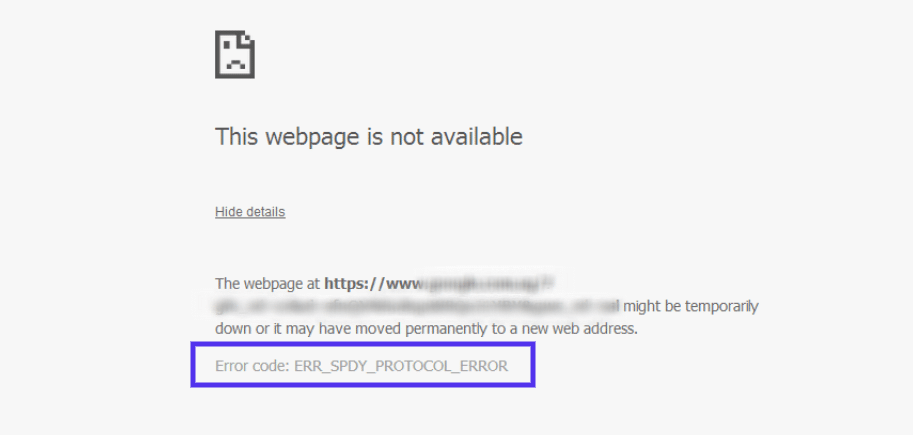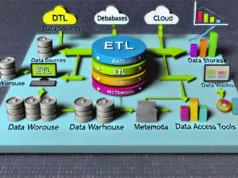Have you ever encountered a cryptic error message while browsing the web with Google Chrome? If you see “Err_spdy_protocol_error” displayed on your screen, fear not! This article equips you with the knowledge and solutions to tackle this issue and restore your smooth browsing experience.
Understanding the SPDY Protocol
Before delving into solutions, let’s shed light on the error itself. SPDY stands for “Speedy,” a protocol previously used by Google Chrome to enhance communication between web browsers and servers. Designed to improve website loading times and efficiency, SPDY offered several advantages over the traditional HTTP protocol. However, in recent years, Chrome has transitioned to a more advanced protocol called HTTP/2, rendering SPDY somewhat obsolete.
Decoding the ERR_SPDY_PROTOCOL_ERROR
The “ERR_SPDY_PROTOCOL_ERROR” message arises when Chrome encounters a compatibility issue related to SPDY. This incompatibility can stem from various factors, including:
- Outdated Chrome Version:An older Chrome version might still rely on SPDY, causing conflicts when connecting to servers that no longer support it.
- Conflicting Extensions:Certain browser extensions can interfere with Chrome’s networking functions, potentially leading to SPDY-related errors.
- Corrupted Browser Cache:A cluttered Chrome cache might contain outdated SPDY data, creating compatibility problems.
- Antivirus Software Interference:Overzealous antivirus programs may sometimes disrupt Chrome’s communication protocols, including SPDY.
- Server-Side Issues:In rare instances, the error could originate from the website’s server configuration, although this is less common.
Proven Solutions to Fix the ERR_SPDY_PROTOCOL_ERROR
Now that we understand the potential causes, let’s explore effective solutions to banish the “ERR_SPDY_PROTOCOL_ERROR” from your screen:
- Update Google Chrome:The most straightforward solution is to ensure you’re running the latest Chrome version. Updates often include bug fixes and compatibility improvements, potentially resolving SPDY-related issues. To update Chrome, navigate to the Settings menu, click “About Chrome,” and allow the browser to check for updates.
- Utilize Incognito Mode:Incognito mode, also known as private browsing, launches a temporary browser window that doesn’t store browsing data or extensions. If the error disappears in Incognito mode, it suggests a conflict with extensions or cached data. Proceed to the next steps for a more permanent fix.
- Disable or Remove Problematic Extensions:If Incognito mode resolves the issue, it’s time to pinpoint the culprit extension. Temporarily disable your extensions one by one and attempt to access the website after each deactivation. If the error vanishes upon disabling a specific extension, you’ve identified the problematic add-on. Consider removing the extension or finding a compatible alternative.
- Clear Your Browsing Cache:A cluttered cache can sometimes lead to compatibility issues. Clearing your browsing data, including cache and cookies, can often resolve the error. To clear the cache, access Chrome Settings, navigate to “Privacy and security,” and select “Clear browsing data.” Choose a time range (e.g., “All time”) and ensure “Cached images and files” is selected. Click “Clear data.”
- Flush Chrome’s SPDY Sockets:Chrome maintains connections (sockets) for efficiency. Flushing these SPDY sockets can help resolve lingering compatibility issues. Open Chrome and type “chrome://net-internals/” in the address bar. Press Enter. Locate the “SPDY/QUIC” section and click “Flush socket pools.”
- Temporarily Disable Antivirus Software:As mentioned earlier, antivirus software can occasionally interfere with browser communication. Try temporarily disabling your antivirus to see if it resolves the error. Remember to re-enable your antivirus software promptly after troubleshooting.
- Reset Chrome Settings:If none of the above solutions work, you can reset Chrome to its default settings. This step clears all extensions, browsing data, and custom configurations. Be aware that resetting Chrome will erase your saved passwords, bookmarks, and other preferences. To reset Chrome, navigate to Settings, search for “Reset settings,” and confirm the reset.
- Consider Server-Side Issues:In rare cases, the error might originate from the website’s server configuration. If none of the previous solutions work and you consistently encounter the error on a specific website, consider reporting the issue to the website owner.
Preventing the ERR_SPDY_PROTOCOL_ERROR
By following these practices, you can minimize the chances of encountering the “ERR_SPDY_PROTOCOL_ERROR” in the future:
- Maintain an Updated Chrome Version: Regular updates ensure compatibility and address potential bugs.


















